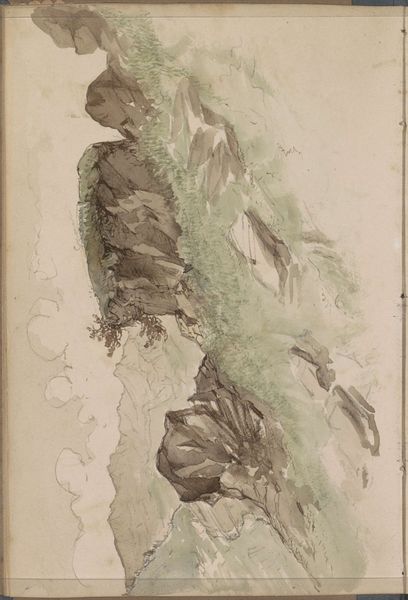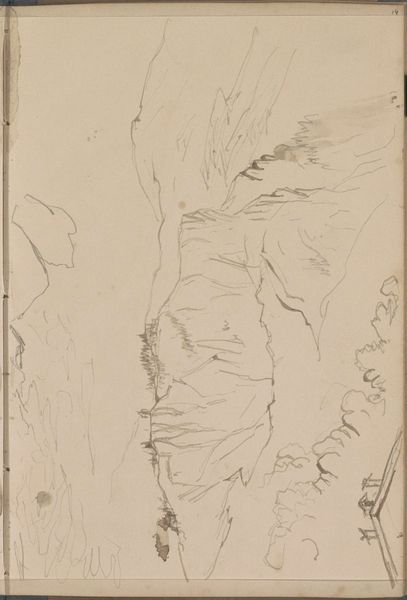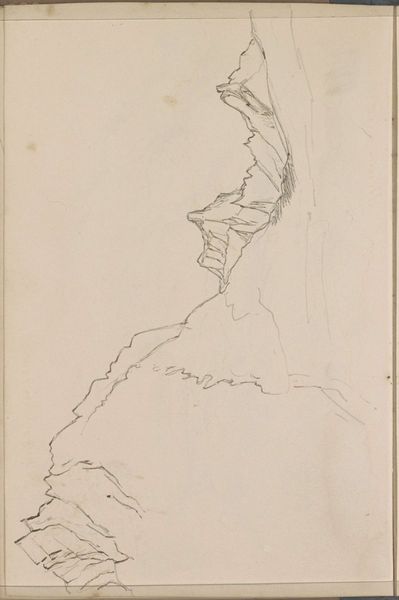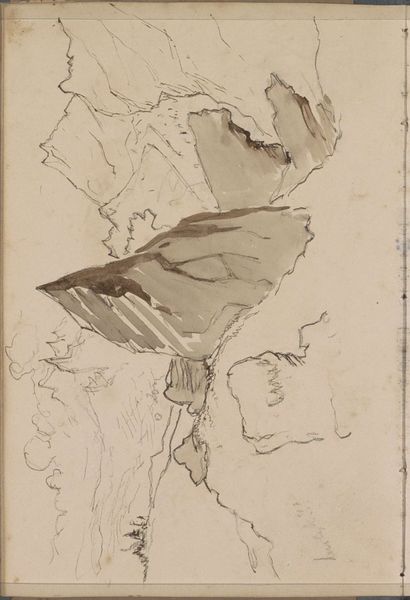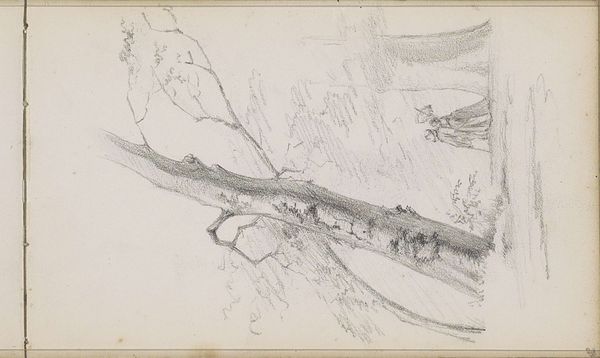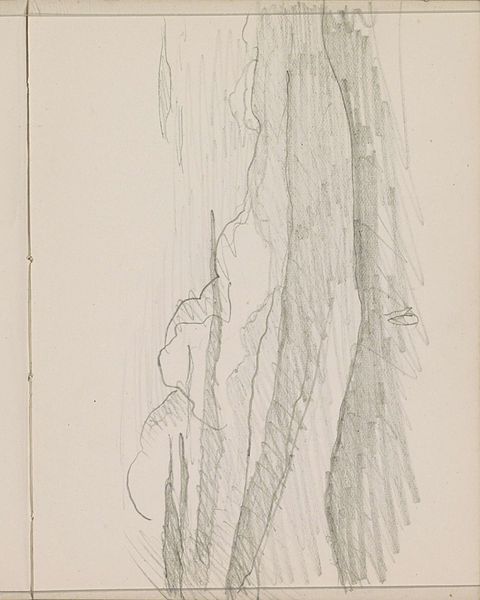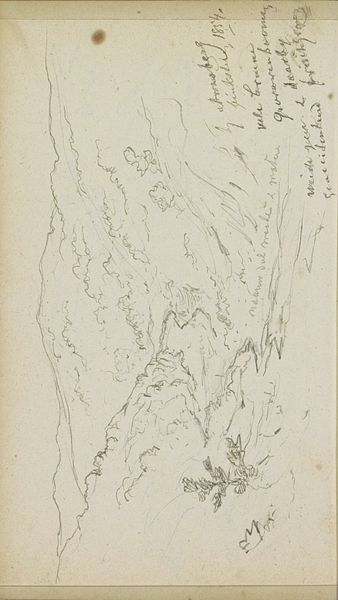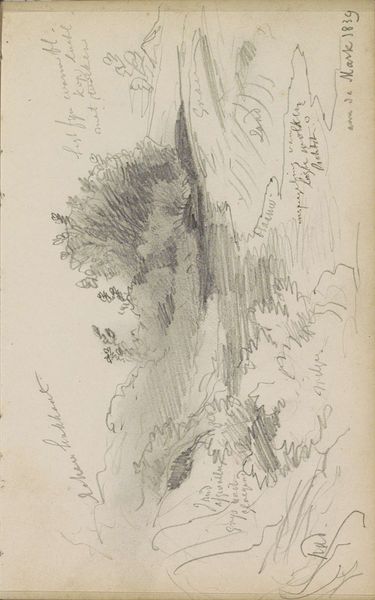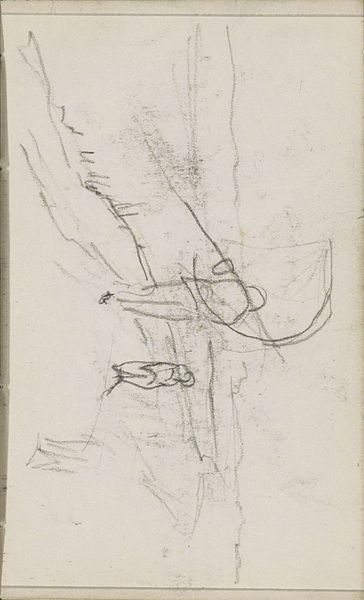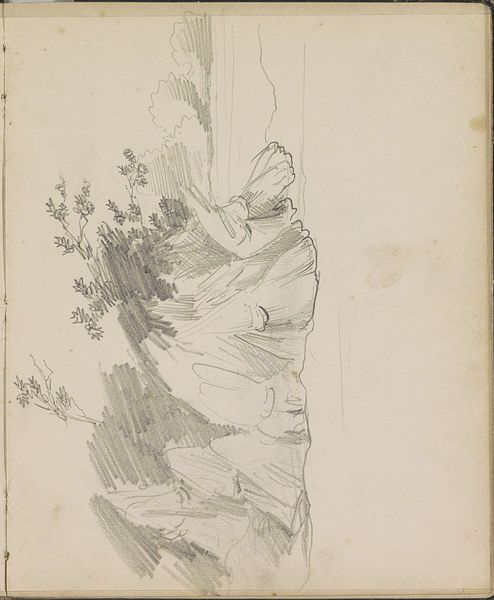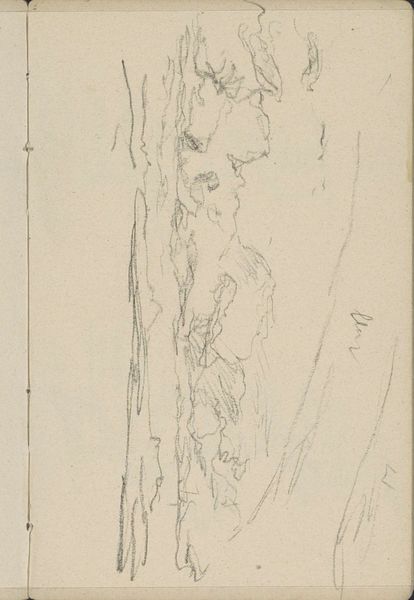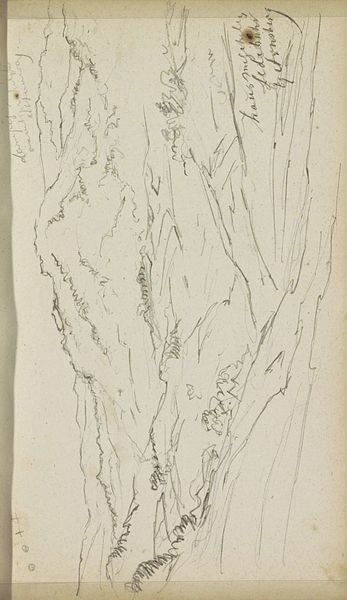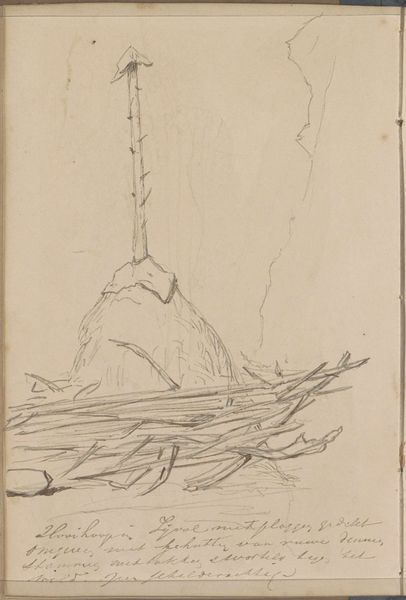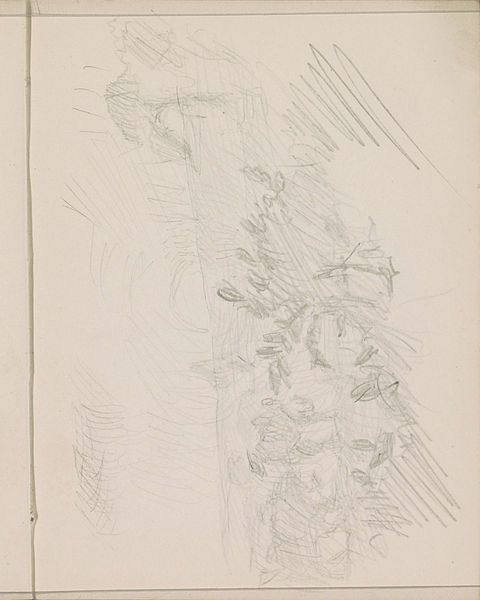
Berglandschap met rotsen bij de Hintertuxer Gletscher in Tirol 1858
0:00
0:00
johannestavenraat
Rijksmuseum
Copyright: Rijks Museum: Open Domain
Curator: My initial response is of profound quietude, an echoing stillness rendered with delicate, yet confident lines. Editor: I agree, the sketch evokes an atmosphere of stark grandeur. We are viewing “Berglandschap met rotsen bij de Hintertuxer Gletscher in Tirol,” a work rendered in ink and pencil in 1858 by Johannes Tavenraat. You can find it here at the Rijksmuseum. Curator: "Grandeur" certainly captures it. Consider how the shaded gully is rendered, a dark, descending stroke carving out a stark contrast to the light-catching facets of the rocks above. It’s almost like a symbolic passage down into a deeper psychological space. Editor: The artist has effectively employed the principles of chiaroscuro to generate this effect. But what truly seizes my attention is Tavenraat's calculated placement of lines; note how each facet of rock seems both individual, and unified in their geometric arrangement. The structural tension compels the eye upwards, but always returning to the mass of the mountain itself. Curator: Indeed, this pull between micro and macro is key, a symbol of man's own individual experience and humanity's collective, geological memory embedded in the Earth. It echoes Romanticism’s fascination with the power of nature and its resonance within us. Editor: Interesting you say that, as you suggest, one can understand that cultural tension and emotional subtext embedded in those lines, in relation to the surface level analysis, as a pure structure itself. Curator: And think too, about the symbolism of the glacier itself. It’s a powerful force that both creates and destroys the landscape, like a perpetual cycle. One could interpret this cyclical nature as symbolic of time itself. Editor: These forms do engage in an elaborate and sophisticated call-and-response. Curator: I think there is more going on under the surface; but to understand what is, it might be interesting to consider other interpretations. Editor: True, further research into the historical and cultural context could lead to some deeper understanding and revelations.
Comments
No comments
Be the first to comment and join the conversation on the ultimate creative platform.
